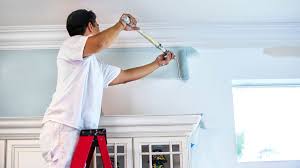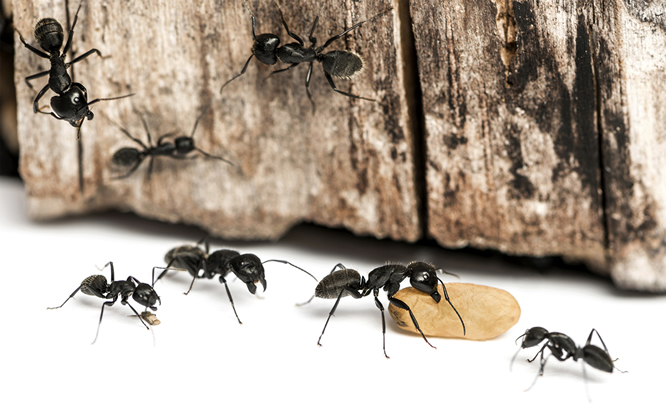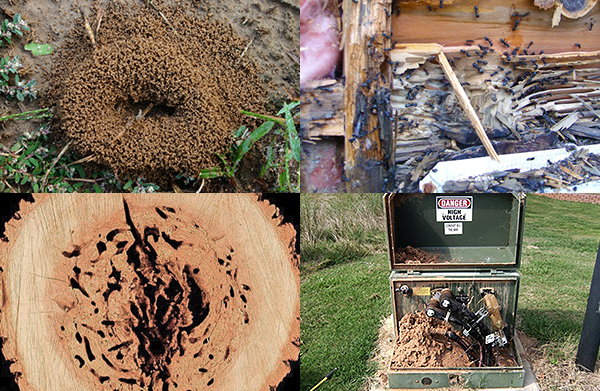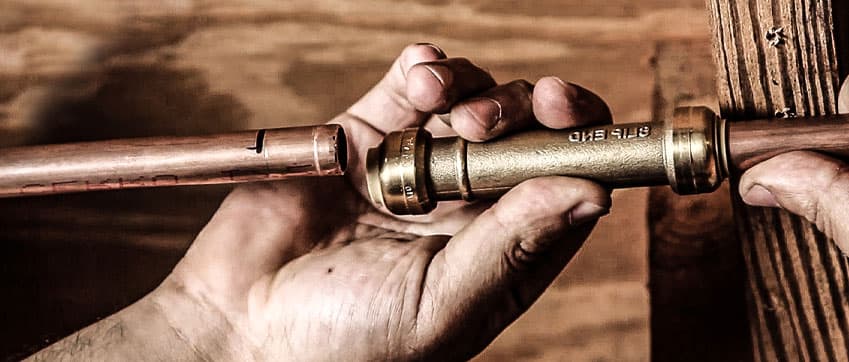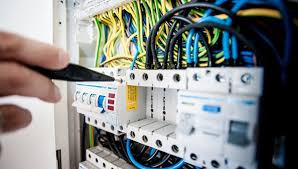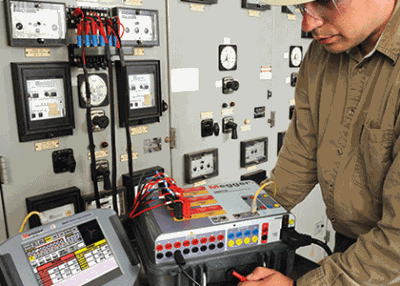What to Clean Before You Move In
Your dream home sure looked spotless during the open house. But gird yourself: No matter how clean the place seemed, it’s likely there are some dirty surprises in store for move-in day.
Sanitizing the bathtub’s a good place to start (you bought someone else’s house, not their bath grime!), but don’t stop there. Before you unpack, buy some rubber gloves, stock up on your favorite cleaners, replace your vacuum’s HEPA filter and hunt down these not-always-obvious dirt hotspots that old homeowners often leave behind.
Heads up!
Step into the dining room and inspect the chandelier. If you find spider webs or dust, use a cleaning system that includes a soft microfiber cloth on an extendable, bendable handle to wipe that mess into submission.
The crown molding throughout the house may be gorgeous, but you should check to see whether dead bugs and dust lurk between the wall and the molding itself. A microfiber cloth or the nozzle attachment on your vacuum works well here. You’ll need a step ladder, of course.
Keep your chin up and check out the ceiling fans; clean the blades before they spin all that dust into the atmosphere. If you’re binge-cleaning at midnight and run out of clean microfiber cloths, remember: An old sock (worn on your hand) or dryer sheets double as dusters.
Hmm, what have we here?
Scan the main living areas of the house for unexpected cleaning projects. Did the former residents keep a sofa strategically placed over a huge scuff on the hardwood? Work your magic with cleaners designed to restore specific surfaces.
Did pets precede you? Don’t just clean the carpet — de-flea it (ideally before you move in). Wipe down the doors (knobs, too!), paying close attention to the lower half, where pets may have pawed or scratched.
The refrigerator vent is probably screaming for some cleaning, too. Don’t skip this one; the dusty buildup is a fire hazard. Vacuum away (bet you’re feeling good about that new HEPA filter now).
Inspect the dishwasher. Any gooey gunk in the food filter? Eww. Give it a good white-vinegar rinse, and deodorize the garbage disposal while you’re at it.
Appliances (sadly) don’t clean themselves.
You didn’t peek inside the furnace during the inspection, did you? Clean or replace the filter, and if you feel comfortable doing so, clean the fan and blower assembly — or call in a pro: The expense may be offset by your energy savings.
Scheduling a professional cleaning for ductwork is a smart move. And now’s the time to replace air filters and clean out dusty water-heater closets.
Investigate the laundry area. Sterilize the washing machine (there are cleaner tablets for this job). Then, turn to the dryer and clean out the lint trap and its cavity; wipe it down with a damp cloth before replacing the trap.
It may take some elbow grease to get these messes out of your way, but you’ll be glad you did — then, you can entertain fearlessly when you throw your housewarming bash.
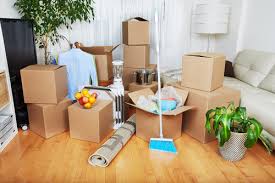
How To Deep Clean Your New House Before You Move In
House cleaning in a new-to-you home will seem like a breeze next to your everyday chores to keep a lived-in house clean and organized. There’s no bric-a-brac to dust around and no furniture to move. Just go room by room, and scrub everything down.
Hopefully, the previous owners left everything at least broom-swept. Just how much house cleaning you do will depend on whether the previous owners had pets or kids, and how clean is “clean enough” for you.
How to Clean Your New House
Some cleaning experts say they spend the most time cleaning their kitchen. Between refrigerators and stoves and cabinets, it’s no wonder! The following cleaning tips will make it easy.
Kitchen
Oven: Remove oven racks and place them in the sink filled with soapy water. If you’re using an oven cleaner, spray it first and let it sit while you clean the rest of the kitchen (except the floor, which should be last in every room). When you’re ready to proceed, scrub the oven down well. It’s safe to clean the racks with steel wool. You can also use a paste of baking soda and vinegar to get your oven clean without using chemicals.
Sink: It’s safe to use steel wool on stubborn stains in a stainless steel sink, or use a paste of baking soda and vinegar. After you’ve removed stains, a solution of water and lemon juice will really make the sink shine.
Cabinets: Dust and wipe down cabinets with a soft cloth all surfaces, inside and out. Don’t forget the tops of cabinet doors.
Countertops: Use a solution of 1 part water and 1 part vinegar to get countertops (except marble) squeaky clean.
Refrigerator: Pull the refrigerator away from the wall and vacuum or dust behind it. Clean the refrigerator inside and out: top, back, and sides. This will probably be the best cleaning your refrigerator gets, so take advantage of an empty, warm fridge to do the best job possible. Place removable racks and drawers in warm soapy water and scrub well.
Bathroom
A number of chemicals are available to clean your bathroom, but a paste of baking soda and vinegar also works well; it even dissolves soap scum. Use this on the tub and sink. Clean glass shower doors with 1 part vinegar and 1 part water in a spray bottle. Use undiluted vinegar in the toilet and scrub with a scrub brush. Some people like to replace the toilet seat in a new home.
Floors
It pays to rent or purchase a steam cleaner, or hire someone to steam clean for you. Steam cleaning removes tough stains and provides a deep clean, even getting rid of pet odors.
You can also steam clean sealed hardwood floors if you have the right equipment. Do not steam clean hardwood floors that have not been sealed, as water could seep in and ruin the floor. Murphy’s Oil Soap also does a great job cleaning hardwoods.
Walls
One thing you’ll probably never do again, unless you have young kids, is wash down the walls in your new home. But it pays to do it once, unless you plan on painting immediately.
Wash walls with a solution of water and vinegar, which is safe on most surfaces. Pay close attention to corners, where dirt and cobwebs collect, and areas up to about waist-level if the previous owner had kids.
Remove tough stains or crayon marks with a Magic Eraser-type product.
Move In Cleaning
When most people move, they’re so wrapped up with packing and move-out cleaning that they forget their future house or apartment needs to be cleaned, too. However, you want your new home to be comfortable and tidy, so it’s important to do some move-in cleaning before you unpack all your boxes.
The following move-in cleaning checklist can make settling into your new home a little easier.
1. Keep Cleaning Supplies HandyIt’s crucial that you’re able to find your cleaning products and tools when you arrive at your new home. Keep them separate from your other packing by putting them in your car rather than loading them on the moving truck. At the very least, make sure they’re in a clearly labeled box and are one of the first things you unload. Then, put them in a place where they won’t blend in with the rest of your boxes, such as under your kitchen sink or even in a bathtub. That way, when you’re ready to start your move-in cleaning, you know exactly where your supplies are.
2. Have a Game Plan
Move-in cleaning is much easier when you’ve decided which rooms you’ll address first. For the best results, clean one room at a time. Start with essential rooms, such as the bathroom, kitchen and main bedrooms. To make this easier, consider placing all your boxes in common areas, such as living rooms or dining rooms. That way, you can do a thorough cleaning job in your essential rooms without having to work around crates and piles of boxes.
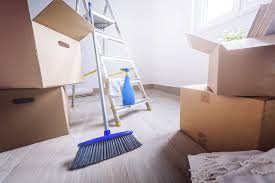
Organize as You Unpack
Hopefully, you’ve already taken the time to dust and wash items before packing them away. Keep in mind that some things — like dishes — may need to be cleaned again before you use them. As you unpack your boxes, take the time to organize areas that are prone to chaos, such as closets, pantries, and so forth. When you do this up front, you don’t have to worry about coming back at a later date to more or less tackle the same chore again.
Enlist Some Help
Cleaning a new house before moving in can be a beast of a task, especially if you’re still working on move-out cleaning or have a tight squeeze in terms of move-out and move-in dates. If you’re looking to ease this stress, it’s not a bad idea to call in some reinforcement from friends and family members. Ask them to come over and help you in exchange for pizza and beer once the task is done, then put on some music and get to work. And don’t forget to return the favor when others need help moving.
Call in The Professionals
If you know you won’t be able to take care of move-in cleaning due to logistics or because you’ve relocated to a new city where you don’t have family and haven’t made friends yet, do yourself a solid and call for backup. The housekeeping professionals at Merry Maids offer a range of specialty services, including move-in and move-out cleaning. When you enlist their help, you can focus on loading and unloading that moving truck without having to worry about moving into a dirty home or losing a security deposit because you ran out of time.
It can be a challenge to take care of a move-in clean while packing and cleaning your old house or apartment. However, the time and effort will be well worth it once you get to kick your feet up and relax in your new home. And remember, if you need help with your move-in cleaning, give your local Merry Maids a call. They’re more than happy to lend a hand so that you can get settled in a little more quickly.
Moving in? Read Our Easy Move-In Cleaning Checklist
Start fresh in your new home by following our professional move-in cleaning checklist. Plus you’ll learn how to make your home chemical and allergen-free from the beginning, and get our top tips for preventing mess build-up in living areas and the kitchen.
Should you clean your house before moving?
Your place is brand new or freshly vacated, so it should be clean, right? Not necessarily. If the house has just been built a whole home clean is necessary to remove any remaining dust or chemical residue that comes with construction.
If you are moving into a previously occupied space, a whole house deep clean is even more crucial. Even if the move out requirements of the property include a move out clean, you can never be sure that the space was cleaned deeply to your standard.
This is particularly important for people with allergies and chemical sensitivities. You’ll want to be sure that your new home is free from any hidden dust build-ups, and if the space was cleaned, it could have been done using synthetic chemical cleaners that can aggravate allergies.The only way you can be sure that a fresh start in your new home is to your standard is to oversee the clean yourself.
How to clean a new bedroom
Cleaning bedrooms thoroughly before you move-into a new house is important as you’ll be exposed to any lingering allergens here when you sleep. As with all rooms, we would recommend working from top to bottom so you can easily keep track of what areas you have already cleaned and avoid transferring dirt to previously cleaned areas.
Pro tip: If there are multiple bedrooms in your new home, dust and clean them all and leave the floors until last. This way you can quickly move from room to room with the vacuum cleaner or mop without having to prepare your floor cleaning tools each time.
Cleaning a bathroom before you move-in
Old bathrooms can be problematic to clean if the previous tenants didn’t clean regularly. It’s a good idea to closely inspect your bathroom for mold, damp areas or damage (eg. holes in grout) before you move-in as it will be easier to address these issues while the bathroom is empty. It’s also worth remembering that conventional bathroom cleaning products tend to rely on harmful chemicals such as bleach to work. So it’s worth washing and wiping all surfaces with natural cleaners to remove toxic residues left by other cleaners.
Kitchen Cleaning in a New Home
Kitchens are sensitive rooms as the risk of exposure to toxins and irritants isn’t just by contact, but also by ingestion of things that our food is in contact with. Therefore, it is important for kitchens to be cleaned and prepared prior to daily use.
Pro-tip: After your kitchen has been washed and wiped, you should also put in preventative measures such as drawer and cupboard lining to help minimize future mess and cleaning.
Cleaning New Living and Common Areas
Thoroughly cleaning living rooms and dining rooms before bulky furniture is moved in will ensure you don’t cover up mess and leave dirt to fester.
It’s also a good idea to thoroughly clean hallways, entryways and landing areas as these can be easily forgotten. Starting with a deeply cleaned slate in common areas will help them stay clean for longer.
Cleaning Tools Needed for a Move-in Clean
Your move-in cleaning toolkit should include a HEPA vacuum cleaner; cleaning sprays for the kitchen, bathroom, glass and general surfaces; a scouring powder or concentrated cleaning liquid for tough cleaning challenges; floor cleaner; plenty of microfiber cleaning cloths (they are better than regular cloths at picking up dust and absorbing liquid); a microfiber mop; scrubbing brushes; a squeegee; and protective gear such as gloves.
To minimize risk to harmful chemicals during cleaning you should use natural cleaning products. A high-quality natural solution will work as well as (or even better than) conventional cleaners without using toxic synthetic chemicals.
Pro-tip: Baking soda is an inexpensive natural deodorizer. Have some on hand while you do your move-in clean in case you come across any smelly areas. Sprinkle baking soda over the affected area and leave it to absorb the smell while you clean or even until you move-in.
Hiring a Professional Move-in Cleaning Service
The sooner your new home is cleaned, the sooner you can Move-in and enjoy it. Hiring a professional move-in cleaning service will save you time and allow you to focus on other important tasks such as packing and paperwork.
Moving Into a New House? Do These 7 Things First
There are some things you don’t want to forget to do before moving into a new house, like giving the place a good deep clean. Here’s a cleaning checklist to help guide you through the process, plus six other vital things to do before moving in.
Moving into a new home can be daunting. You are already changing so much and parting ways with a home where many memories were made.
The fun part of moving day is thinking about what should go where. But before you unload the moving truck and start arranging furniture, there are some important move in things to check off the list first. If you forget to do any of these before unpacking, you will likely regret ffit later.
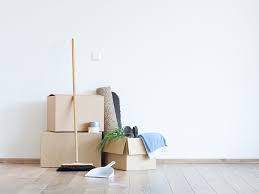
Here are seven things to do before moving into a new house:
*Renters: This list applies to you, too! If you’re moving into an apartment, your landlord may have some of these steps covered. It’s best to check with them to make sure!
1. Double check the place.
Once the keys are in hand, head over to your new pad and check over all the rooms. Make sure everything that was agreed upon in the sale is still accounted for once you’re the new homeowner. You will want to be sure everything you expected to be there is still in the house.
2. Change the locks.
There is no way to know how many sets of keys to your house may be floating around. Give yourself peace of mind — hire a locksmith and have a set of new keys made.
3. Give your new house a deep clean.
While your new space may have had a cleaning prior to sale, you will still want to give it a good deep cleaning so it’s up to your standards. You never know what went down there before you moved in!
Not sure what to clean?
QUICK TIP: Pack a box of essentials and deliver that first to your new home. Fill it with cleaning supplies, paper towels and toilet paper along with the other essentials you’ll need to make it through moving day (lots of snacks, a set of clean sheets so you can sleep after a long day of unpacking, etc.).
Need help? Hire a pro to get your new house ready for moving day.
If you are trying to save some time on the unpacking process and you don’t want to worry about the deep cleaning yourself, hire someone to get to the grime for you. At least hire a professional company to clean your carpets and grout. There is no telling what may be hiding in those carpeted floors, especially if the previous owners were pet people.
Also, during the moving process, furniture may have shifted and scrunched your wall to wall. Often times a professional company can stretch and clean carpets in one visit and give you a fresh, clean floor.
4. Change the toilet seats.
This may seem like a silly one, but the toilets are probably the grimiest spot in a house. Rather than spending your time cleaning them, remove them, clean under there and replace them with a brand new seat. You will have serious peace of mind, sitting on the brand new seats, knowing your family has christened them.
5. Pest control.
Make sure you and your family are the only ones moving into your new house. Hire an exterminator to come by and check for unwanted guests, plug holes for all pests and spray to deter any future uninvited home invaders.
6. Change your air filters.
Since you can’t be sure when they were last changed and you don’t want extra dust clouding up your newly cleaned home and carpets, it’s best to just start with fresh filters. Mark the date you installed them on the filter and your calendar so you can keep track and change them regularly.
7. Safety first!
While conducting that deep clean, take some time to make sure your home is safe. While in the laundry room, vacuum out that dryer vent. As you are clearing dust from walls and ceiling fans, change the batteries in your smoke detectors. When you clean out your kitchen cabinets, find a proper place to store a fire extinguisher.
